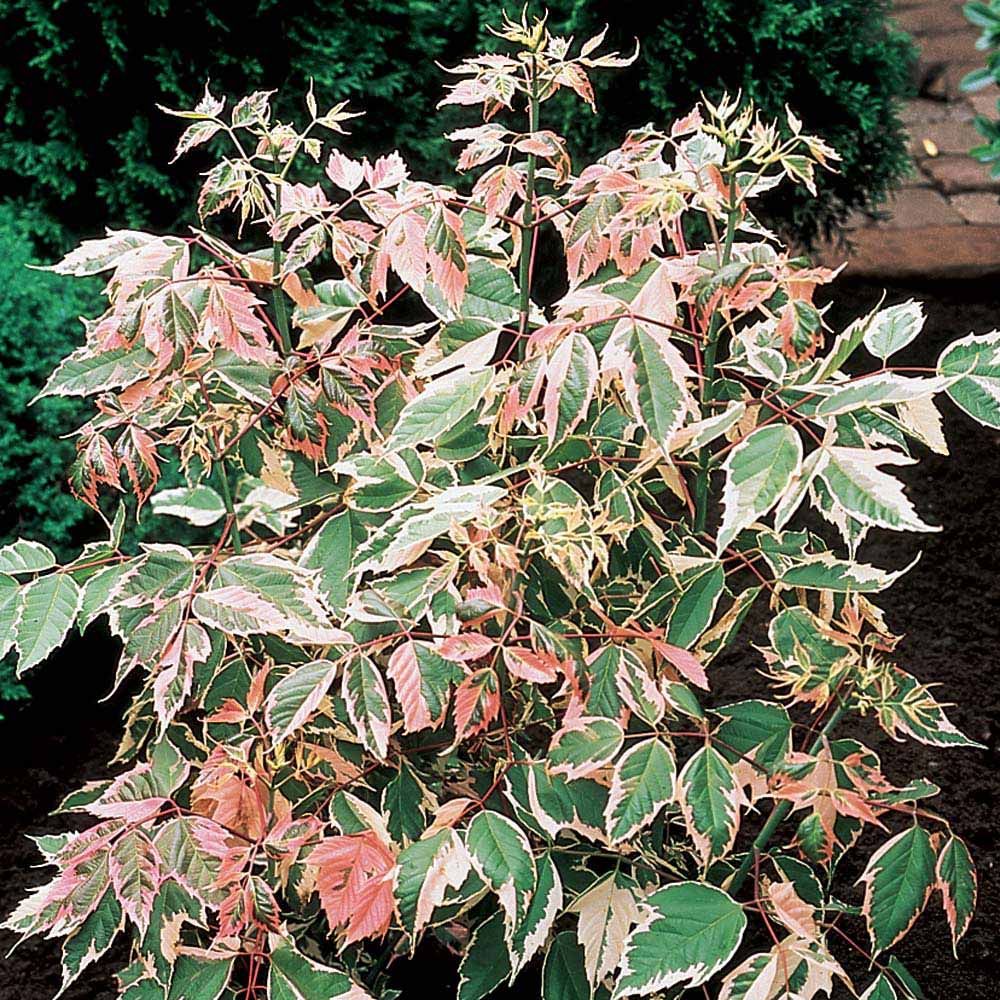Acer negundo Flamingo
Acer negundo Flamingo
Couldn't load pickup availability
Common Name: Flamingo Box Elder
Description: The Flamingo Box Elder (Acer negundo 'Flamingo') is a deciduous tree known for its striking variegated foliage. In spring, new leaves emerge with a vibrant pink hue, maturing to green with white or cream margins, creating a distinctive and colorful display. This cultivar typically grows to a height of 6–15 meters with a spread of 4.5–9 meters, forming a rounded canopy. It is a fast-growing tree that thrives in full sun to partial shade and adapts well to a variety of soil types, including moist and well-drained soils. While it is tolerant of urban conditions and can withstand air pollution, it is important to note that the species is considered invasive in some regions. Additionally, the seeds of Acer negundo contain a protoxin, hypoglycin A, which has been associated with a neurological disease in horses known as seasonal pasture myopathy. Therefore, caution is advised when planting this tree in areas accessible to livestock. The Flamingo Box Elder is valued for its ornamental appeal, particularly in larger gardens and parks where its colorful foliage can be showcased.
Form:
- Tree - Medium
Mature Size:
- Height: 6–15 meters
- Width: 4.5–9 meters
Aspect:
- Full Sun
- Part Shade
Flowering:
- Flowers in Spring
Flower Colour:
- Greenish-yellow (not particularly showy)
Key Attributes:
- Fast-growing
- Variegated foliage
- Urban tolerant
- Ornamental appeal
Toxicity: Seeds contain hypoglycin A, which is toxic to horses and can cause seasonal pasture myopathy.
Companion Plants:
- Japanese Maple (Acer palmatum)
- Flowering Dogwood (Cornus florida)
- Redbud (Cercis canadensis)
- Hosta (Hosta spp.)
- Ferns (Various species)
Note: Due to its invasive potential and toxicity to horses, it is recommended to consult local guidelines and consider site-specific conditions before planting Acer negundo 'Flamingo'.

Enter Your Postcode Below & Click 'Check' To See Delivery cost To Your Area
- Choosing a selection results in a full page refresh.
- Opens in a new window.

